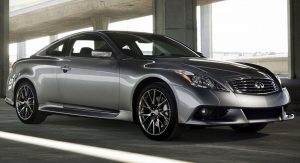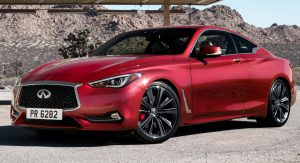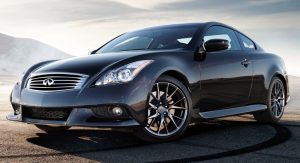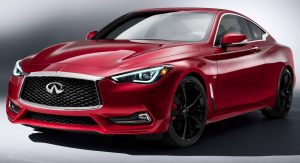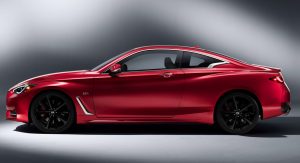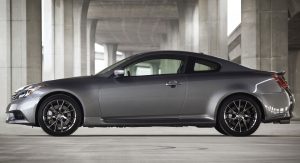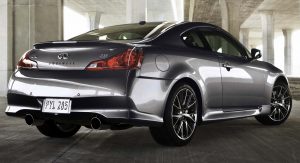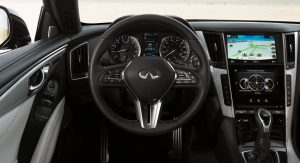With a sleek body, a new bold design and a dynamic stance, Infiniti’s latest Q60 wants to create a stir in the premium compact coupe segment; unlike the previous generation…
Don’t get us wrong, the outgoing Q60 Coupe was a capable machine and an exotic alternative to the boring competition, but its more plain design language didn’t quite scare its rivals. Granted, the facelifted variant, for example, was created when Infiniti was still looking for an identity, but the new coupe looks composed, confident and ready to take some prisoners.
The overall proportions remained more or less unchanged, as the new Q60 comes with the same fastback roofline – although this time, it slopes continuously with the boot. Another significant change is the chrome-plated, rear window frame kink at the C-pillar – a unique and interesting approach, making the vehicle more distinctive.
The car’s hips (rear three quarter panels) are now more pronounced thanks to the graceful, sinuous lines adopted by the new design language. In fact, unlike the previous generation which sported a flat, simple profile, the new model’s horizontal dynamic lines compliment and – at the same time – mask its proportions, contributing to a sporty appearance.
Mind you, whereas the outgoing model shared some design elements with the sedan version, the new Q60 doesn’t appear to be “just the coupe variant” of the Q50, as it sports its very own cues that set it apart.
Coming to the front, Infiniti’s current design philosophy builds a very powerful personality for the Q60, aided by the sizable grille, governed by the huge logo – found on the entire line-up – and the flat snout. That said, it’s game over for the pointy front fascia of the previous model, and for the vertical headlights as well that were ditched in favor of horizontal light units with the Light Guide technology that mimic the shape of the human eyelid. The muscular lines of the hood are a trait carried over from the G37.
Coming round the back, absolutely every simple Nippon design cue, reminiscent of the previous generation, has been replaced. Purists might argue that the European-inspired design spoiled the vehicle’s Japanese approach to the segment, but there’s no denying that the model transformed from an oddball, awkward, but original contraption (sporting some design elements from the Skyline), into a nicely sculpted and proportioned, but forgettable machine. The big taillights became narrower, but lost the double lamps.
The rear bumper still sports dual exhaust pipes, although it now features two vertical lines that reduce its visual weight.
The interior, believe it not, might not be everybody’s cup of tea, as it features a relaxed approach, making the vehicle more of a gran tourer than an actual sports car. In fact, the outgoing Q60’s cabin appears to be much more driver focused, with a straight to the point dashboard and center console. The single infotainment screen has been replaced with two units – controlled by a joystick located near the gear shifter – while the analogue clock that offered a dose of classy motoring has vanished completely.
Granted, the new three-spoke steering wheel and instrument cluster are less bulky, and the modern, overall look feels more well put together.
There’s no denying that the new Q60 is a different animal, leaving behind plenty of things that the old model brought to the table. It became a car that can hold its own against the fearsome competition, but lost some Japanese panache in the process.





